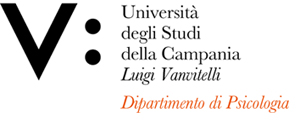Francesco PANICO
Insegnamento di NEUROLOGIA DELLE EMOZIONI
Corso di laurea magistrale in PSICOLOGIA DEI PROCESSI COGNITIVI
SSD: M-PSI/02
CFU: 4,00
ORE PER UNITÀ DIDATTICA: 28,00
Periodo di Erogazione: Secondo Semestre
Italiano
| Lingua di insegnamento | ITALIANO |
| Contenuti | - Correlati neurali delle emozioni; |
| Testi di riferimento | Anolli, L. (2002). Le emozioni. Milano, Unicopli. |
| Obiettivi formativi | Conoscenza delle basi neurofunzionali delle emozioni nei disturbi neuropsicologici e psichiatrici. |
| Prerequisiti | Conoscenze basilari di neuropsicologia. |
| Metodologie didattiche | Lezioni frontali con modalità interattiva: gli allievi parteciperanno alle discussioni in aula e avranno la possibilità di presentare e discutere gli articoli proposti. |
| Metodi di valutazione | Esame orale. |
| Altre informazioni | - |
| Programma del corso | - Correlati neurali delle emozioni e della regolazione emotiva: |
English
| Teaching language | Italian |
| Contents | - Neural correlates of emotions; |
| Textbook and course materials | Anolli, L. (2002). Le emozioni. Milano, Unicopli. |
| Course objectives | Students will gain knowledge regarding the neurofunctional basis of emotions, and behavioral disorders. |
| Prerequisites | Basic knowledge in neuropsychology. |
| Teaching methods | Interactive lectures: students will participate in class discussions and make oral presentations of the selected articles. |
| Evaluation methods | Oral exam. |
| Other information | - |
| Course Syllabus | - Neural correlates of emotions and of emotional regulation: |








